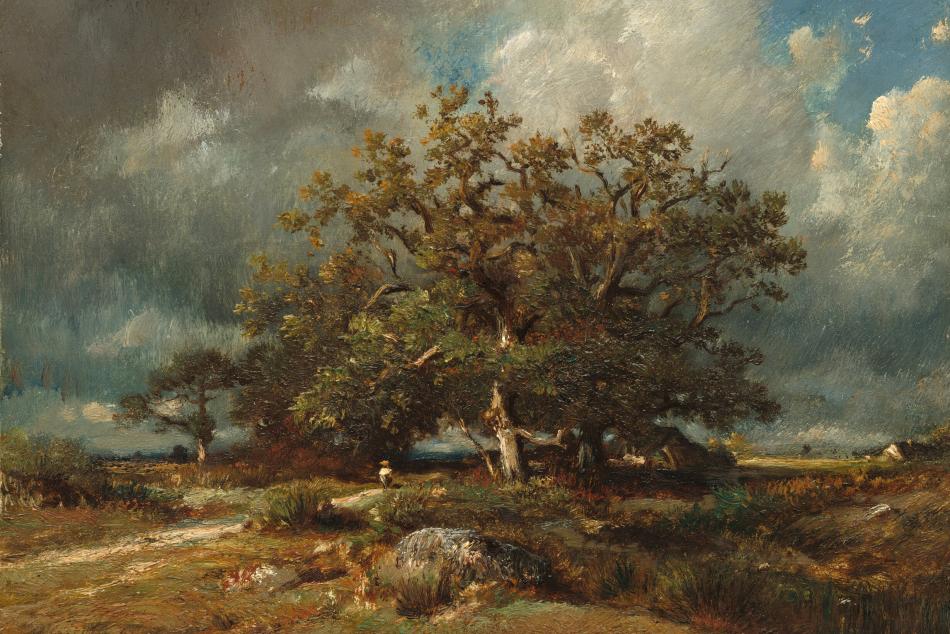Five Artworks About Climate Change

Our rapidly changing environment inspires artists from Spanish painter Joan Miró to American photographer Ansel Adams. Their art can help start conversations about critical issues like water access, the effects of industry, and natural disasters.
1. Joan Miró, The Farm, 1921–1922

When he was 17 years old, Joan Miró first visited his parents’ new summer retreat, a farm in the village of Montroig, about 60 miles from Barcelona. The artist loved the countryside in Montroig and spent all his summers there. The rustic farm lacked a public water supply. Miró used both a cistern (depicted between the barns) to collect precious rainwater for washing clothes and watering crops and a well (behind the cistern) to supply drinking water.
2. Bernarda Bryson, Dust, 1935–1936

Bernarda Bryson made Dust for a project she titled The Vanishing American Frontier. The federal Resettlement Administration had hired her to document poverty, unemployment, and the effects of over farming. All of these contributed to the Dust Bowl, a period of severe droughts and dust storms that plagued the Great Plains during the 1930s.
Hearing President Franklin D. Roosevelt speak about the changing frontier inspired Bryson. In that 1936 speech, the president said, “The period of geographical pioneering is largely finished. But, my friends, the period of social pioneering is only at its beginning.”
3. Ansel Adams, The Tetons and the Snake River, Grand Teton National Park, 1942

We often associate photographer Ansel Adams with this country’s national parks. His stunning black-and-white photos of the vast American wilderness popularized national parks during the 20th century. Adams worked to conserve and protect the wilderness during his 37 years as a member of the Sierra Club’s board of directors.
4. Edward Burtynsky, Dam #6, Three Gorges Dam Project, Yangtze River, China, 2005

Growing up with a General Motors plant in his hometown sparked Edward Burtysnky’s interest in using photography to explore locations transformed by industry. Here, Burtynsky photographed the construction of the controversial Three Rivers Dam in Hubei Province, China. The dam was built to increase the production of electricity and to raise the region’s shipping capacity. In reality, its construction ruined land that had been used for farming, displaced over a million people from their homes, and triggered ecological changes from landslides to diminished biodiversity.
5. Richard Misrach, Untitled [New Orleans and the Gulf Coast, 2005], 2005

American photographer Richard Misrach traveled to New Orleans and the Gulf Coast shortly after they were ravaged by Hurricane Katrina in 2005. As he wandered through the devastated neighborhoods, he took thousands of pictures of messages on houses, cars, and signs. Not one person appears in the images, but their voices are present. Some provided updates on their safety while others made jokes. Still others expressed frustration and anger: “WHAT NOW?”
Katrina killed more than 1,300 people, displaced over a million more, and caused around $100 billion in damage. Climate change has led to more frequent and more severe hurricanes in the American South. That increase is expected to continue in the future. So, what do we do now?
You may also like

Article: Painting Climate Change in the 17th Century
An environmental historian discusses how artists documented the Little Ice Age.

Article: Portraits of Trees, a Favorite Subject of Artists
Many artists have painted, photographed, and drawn nature’s magnificent sculptures.


